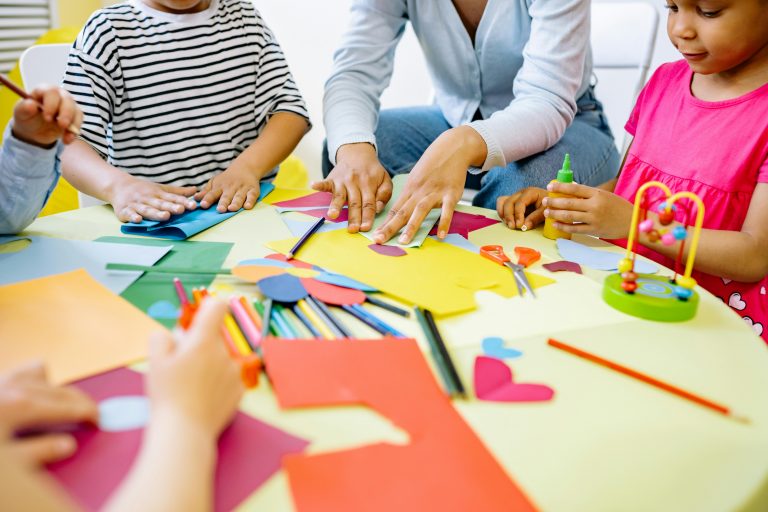In today’s digital age, the popularity of various media forms has skyrocketed. Modern photography, in particular, has emerged as both an art form and a beloved hobby. According to a recent survey, 22% of 60,000 respondents took up photography as a hobby in 2023. However, mastering this creative outlet requires practice.
This article aims to guide beginners by providing valuable tips on effective photography practice. By following these tips, beginners can enhance their skills and nurture their passion for capturing beautiful moments.
Understanding Your Camera and Equipment

To build a solid photography foundation, it all starts with getting to know your camera and gear. To unleash its true potential, take a deep dive into your camera’s features, settings, and capabilities. Don’t forget to thoroughly read the camera manual—it’s crucial! Understand terms like aperture, shutter speed, ISO, and white balance.
Using lenses and accessories can enhance your photographic repertoire. You’ve got the prime lens for crispness, the wide-angle for capturing expansive views, and the macro lens for capturing those intricate details. And don’t forget to embrace filters, tripods, and remote shutters to open up even more creative possibilities. By getting to know your equipment inside and out, you’ll be able to refine your skills and express your artistic vision effectively.
Mastering Composition Techniques
Captivating photos are all about mastering composition techniques. One of the key tricks is the rule of thirds. Instead of placing your subjects right in the center, try putting them slightly off-center. This creates a sense of balance and adds intrigue to your shots.
Another technique to explore is leading lines. These lines draw the viewer’s gaze into the frame, making the photo more engaging. And don’t forget about framing! By framing your subjects within objects, you can add depth and context to your images.
Symmetry is another great way to make your photos visually appealing. For example, a road leading to a distant mountain or a doorway framing a busy street. If you want to learn more about these techniques, there are plenty of visual aids available that can show you their impact. Once you grasp these techniques, your photography will reach a new level, allowing you to craft compelling narratives and evoke emotions in every frame.
Exploring Lighting and Exposure
Exploring lighting and exposure can really enhance your photography skills. Whether it’s natural light or artificial light, they both play a crucial role in creating mood and texture in your shots. To master exposure, you can adjust the aperture, shutter speed, and ISO to capture well-lit photos.
You can experiment with the warm tones of the golden hour or try shooting in low light for more dramatic effects. Don’t forget about white balance, which helps you match the colors to the lighting conditions. If it’s too cool indoors or too warm outdoors, you can adjust the white balance accordingly.
Exposure compensation is another handy technique that gives you precise control over your shots. By combining all of these techniques, you’ll be able to capture stunning photographs that are bathed in perfect light and showcase authentic colors no matter where you are.
Practicing Different Genres of Photography
Embark on a creative journey and explore diverse photography genres! From the intimate storytelling of portraits to the vast expanse of landscapes, the intricate details of macros, and the candid narratives of street photography. Each genre comes with its own set of challenges and techniques.
Portraits, they’re all about building a connection. Landscapes, it’s all about finding that perfect composition. Macros, they’re all about capturing the tiniest details. And street photography, it’s all about seizing those fleeting moments.
So dive into these realms, and discover your passion and strengths. Don’t be afraid to experiment and broaden your skills. Through these experiences, you’ll craft captivating visuals and tell powerful stories through the lens. Your photographic journey will be truly enriched by exploring various genres!
Utilizing Editing Software

Post-processing and editing are super necessary for digital photography. They refine your shots and make them look even better. Some great software options like Adobe Lightroom and Photoshop have all the tools you need. Start with the basics, like adjusting exposure, contrast, and colors. You can also crop and straighten your photos to make them look right.
If you want to get fancy, you can try advanced techniques like retouching and adding filters. And if you want to save time, presets are a game-changer. They let you edit quickly while still keeping control over your creative vision. By mastering these tools, you can take your photos to the next level and tell amazing visual stories.
Developing Your Creative Eye
Cultivating a creative vision is critical in photography. It goes beyond technicalities, adding uniqueness and emotional resonance to your work. Train your eye to spot extraordinary details in everyday scenes. Look for dynamic angles and lighting that capture the mood. Be open to experimentation, combining elements that others might miss.
Learning from Other Photographers
Studying fellow photographers’ work is a gateway to growth. Discover renowned artists like Ansel Adams and his awe-inspiring landscapes or Annie Leibovitz‘s captivating portraits. Analyze their styles, techniques, and storytelling prowess. Engage in photography communities to share insights and gain feedback. Attend workshops to refine skills and broaden horizons.
Exposure to diverse perspectives nurtures your artistic sensibilities. By immersing yourself in the works of masters and collaborating with peers, you forge a path of constant learning, refining your craft, and shaping your unique visual narrative.
Practicing Regularly

Consistent practice is the cornerstone of advancing photography prowess. Set clear goals to guide your development and allocate focused time for shooting and learning. Infuse photography into your daily routine to harness steady improvement, even in small increments. You foster a seamless connection between your passion and daily activities by weaving it into your life.
You’ll witness tangible growth as you capture diverse subjects, experiment with techniques, and refine your artistry. Through regular engagement, you sharpen technical skills and nurture an instinctive creative eye, amplifying your ability to encapsulate moments in captivating frames.
Dealing with Challenges and Learning from Mistakes
For beginner photographers, navigating challenges is an integral part of the journey. It’s common to encounter issues like overexposure, blurry shots or struggles with composition. But here’s the thing: embrace these challenges as stepping stones. Look for solutions online or seek mentorship to overcome these hurdles. Take the time to analyze your mistakes and understand how you can improve.
Remember, patience is vital – growth doesn’t happen overnight. Keep pushing forward, learning from your missteps, and refining your craft. Every error is a lesson, and every challenge is an opportunity to evolve. As you persist, you’ll conquer these hurdles and develop resilience and mastery. So, embrace the journey and watch as your skills flourish through the invaluable process of trial and error.
Conclusion
Mastering the art of photography necessitates a multifaceted approach. Every aspect contributes to your growth, from understanding your camera to mastering composition, lighting, and editing. Yet, at its core lies the vital triad of practice, dedication, and ongoing learning.
As you embark on this creative odyssey, remember that each snapshot is a canvas for your unique vision. So, seize your camera, embrace challenges, and revel in shaping fleeting moments into everlasting narratives, weaving stories that resonate through the lens of your passionate pursuit.




